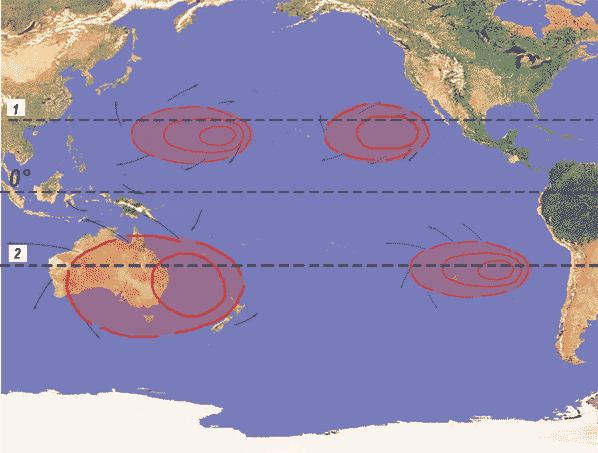|
|
 |
|
|
|
 |
| |
|
|
 |
Weather
Basics |
2. Circulation Systems - El Niño / La Niña
Worksheet 4:
The influence of El Niņo on the weather
|
|
|
|
|
 |
Every now and then the atmospheric pressure pattern in the Pacific Ocean region changes.
During El Niņo conditions, high pressure conditions develop over the western Pacific Ocean and South East Asia and the high pressure area over the Easter Islands diminishes. As a result of these changes, the pressure difference across the Pacific Ocean becomes smaller. This results in a decrease in the force of the trade winds.
|
 |
 |
|
1. The Pacific, pressure system and ocean currents, El Niño conditions
map by design agency "Zur Gestaltung-Nürnberg", modified by Julia Heres
Please click to enlarge!
|
|
As the trade winds become weaker, they are less able to push the cold water of the Humbolt current from South America towards the west.
Watch this animation to see the Walker circulation under the influence of El Niņo:
|
Weather under El Nino influence, animation and design by Julia Heres |
And if you want to see it more dramatically, click onto this picture to see a 3D-Simulation:
(Attention: The animation is 870 kb in size and so may take a little while to load!)
|
|
Exercise:
Write down what you see happening in the cross sectional diagram and the animation. Where is the equator in the animation?
|
About this page:
author: Dr. Helmut Schrettenbrunner - University of Nürnberg, Germany
educational reviewing: Dr. Yvonne Schleicher, Julia Heres - University of Nürnberg, Germany
last update: 2003-09-09
|
|
 |
|







